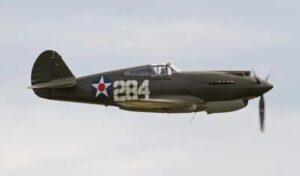14 October 1938 – “Curtiss test pilot Edward Elliott takes a prototype XP-40 single-engine, single-seat, all-metal fighter, and ground-attack aircraft up over Buffalo for its first test flight. The plane would later enter production known as the P-40 Warhawk.”(1)

“The P-40 was the brainchild of Don Berlin, the brilliant but argumentative chief engineer who came to Curtiss-Wright in the 1930s after leaving another job because he clashed with another air pioneer, Jack Northrop. Berlin developed the series of radial-engined fighters known in U.S. service as P-36s (they, too, fought at Pearl Harbor) and in 1938 won a U.S. Army contract to adapt the design to use an Allison liquid-cooled in-line engine.
Berlin designed the P-40 around the Allison V-1710 12-cylinder liquid-cooled “monster-of-an-engine,” as one mechanic described it, with better streamlining, more power and better fuel consumption than most air-cooled radials. This was the “default” powerplant for about 90 percent of the 13,378 P-40s built, but it lacked a powerful supercharger for high-altitude fighting.
About a thousand P-40 models later used the Packard-built V-1650-1 license-built Rolls-Royce Merlin 12 cylinder V-type engines.” (2)
Sources: (1) nycaviation.com; (2) DefenseMediaNetwork
